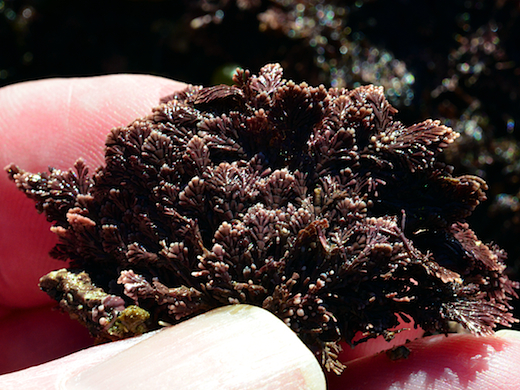Corallina caespitosa R.H.Walker, J.Brodie & L.M.Irvine

Description: Base crustose, erect fronds up to 45 mm long, stiff, unbranched stipe, branching dense, irregularly simple to compound pinnate; intergenicula generally longer than broad, cylindrical at frond base, becoming compressed, wedge-shaped toward the frond apex, typically with 10–15 tiers of medullary cells; apex with 3–4 or more (up to 7) intergenicula or occasionally a single undivided irregular intergeniculum. Spermatangial conceptacles axial, beaked, 500–600 µm in diameter; tetrasporangial conceptacles axial, sometimes pseudolateral, 450–600 µm in diameter; carposporangial conceptacles unknown.
Habitat: Intertidal on rock in mid- to lower-shore rockpools; on Mytilus on wave-exposed shores in the west of Ireland. Occasional.
Distribution: Widely distributed in Ireland; Britain north to Yorkshire; Channel Islands; Northern France (Channel and Atlantic); Portugal; Azores, Italy; Greece; Canary Islands; Ghana; South Africa; California; New South Wales; Japan.
Similar species: Corallina officinalis is commoner, is more chalky in colour, has less regular branching, and generally has more rounded articulations.
Jania rubens is dichotomously branched; Jania squamata is pinnately branched, but is rare, and tends to be found mostly as epiphytic growths on Cystoseira in pools.
.jpg)






